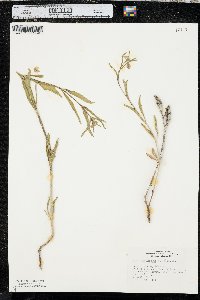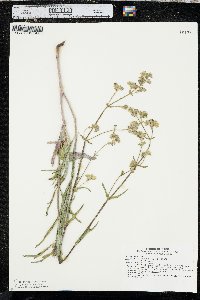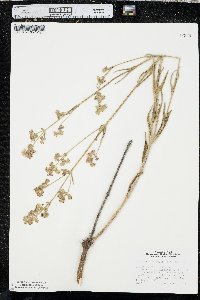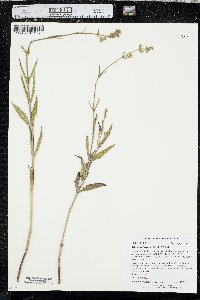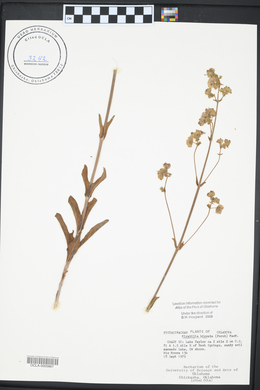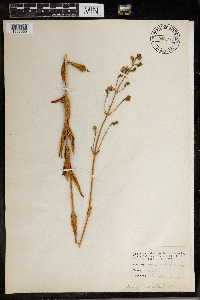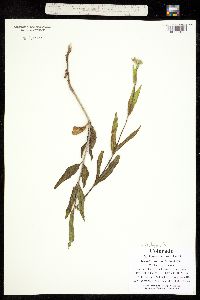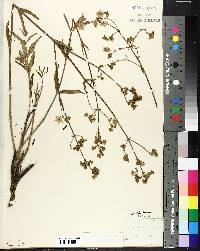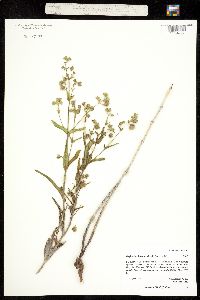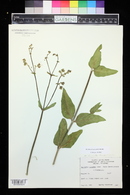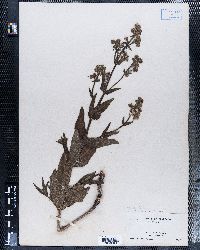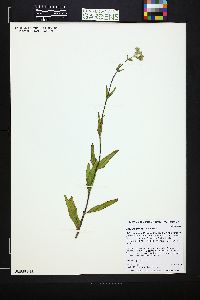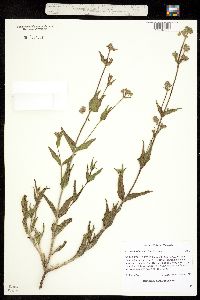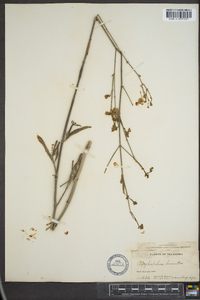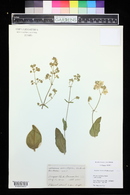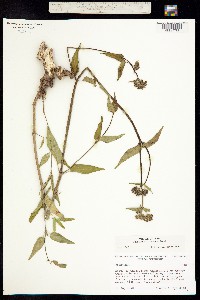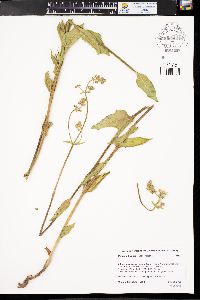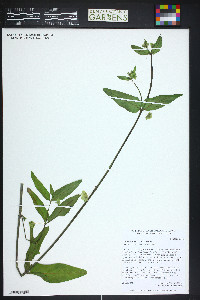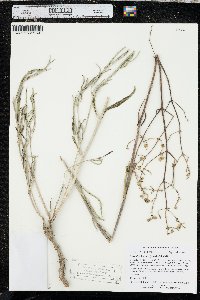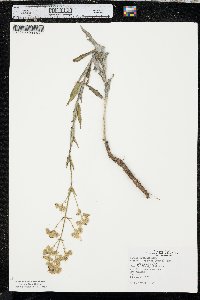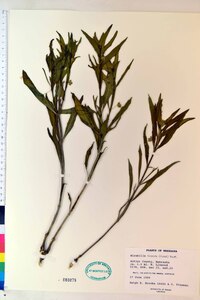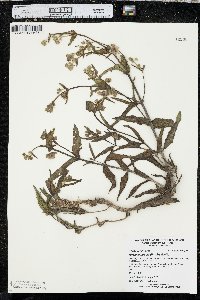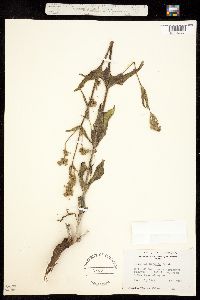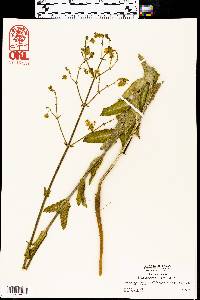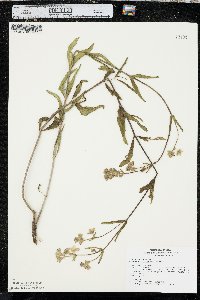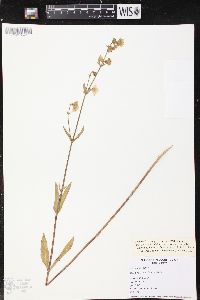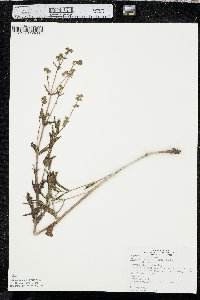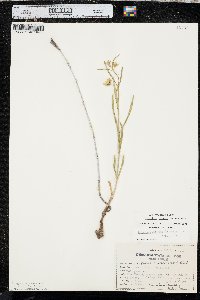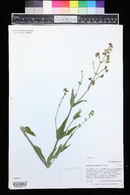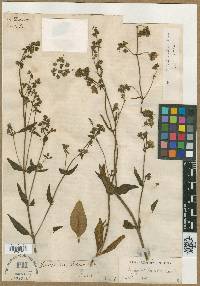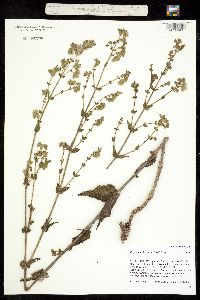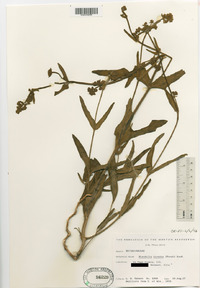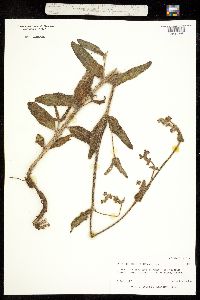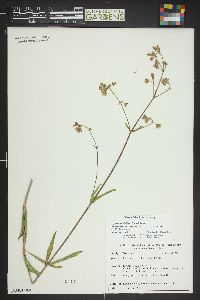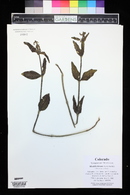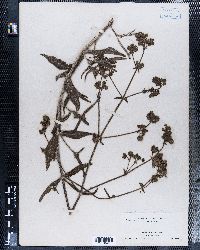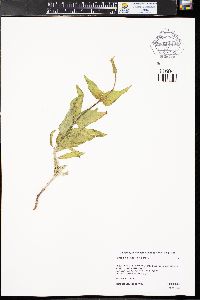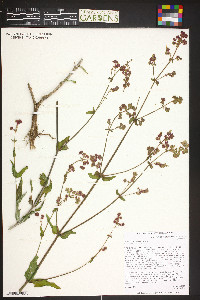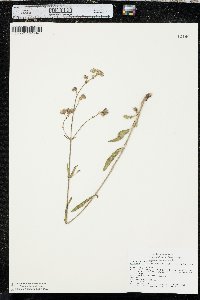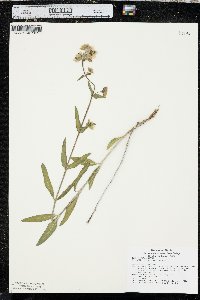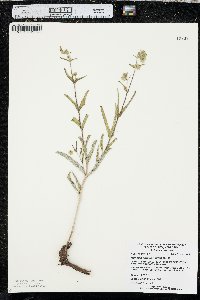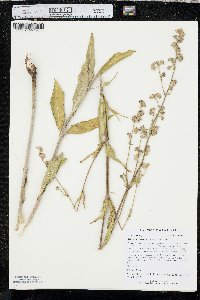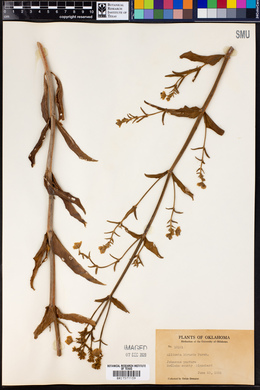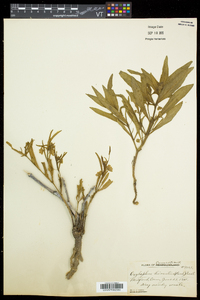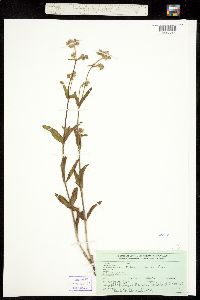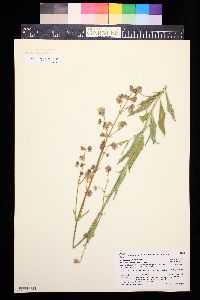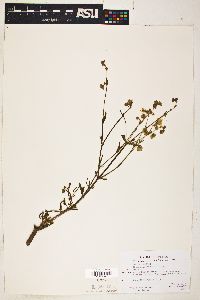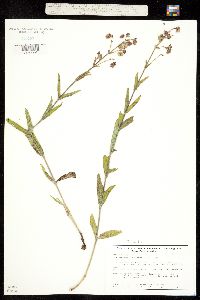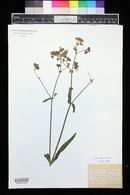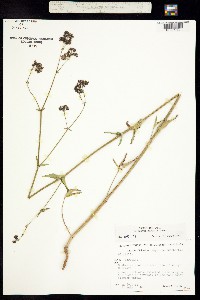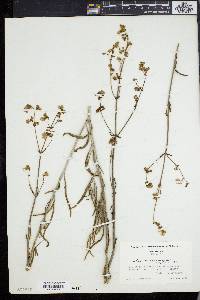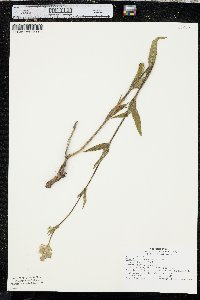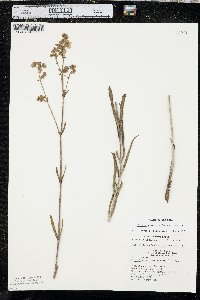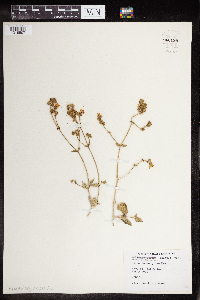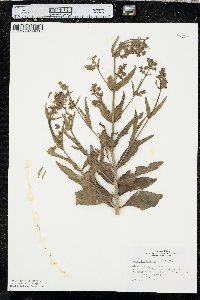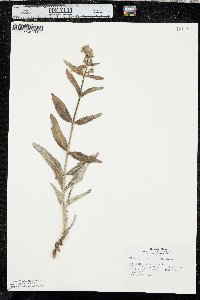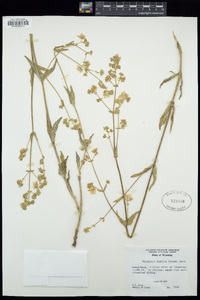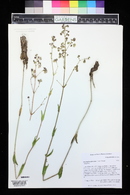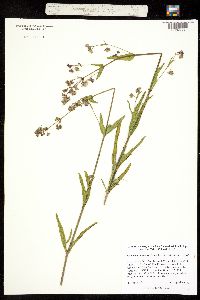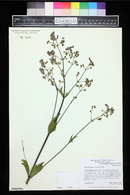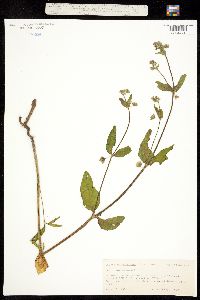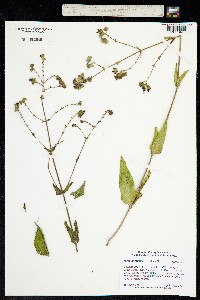
|
|
|
|
Family: Nyctaginaceae
hairy four o'clock, more...hairy four o clock, hairy four-o'clock
[Allionia hirsuta Pursh, moreAllionia hirsuta subsp. coloradoensis , Oxybaphus hirsutus (Pursh) Sweet] |
Perennial herb 0.8 - 1.5 m tall Leaves: few to many, opposite, ascending to spreading, and almost stalkless. The leaf blades are green to grayish or bluish green, 1 - 11 cm long, 0.6 - 2.5 cm wide, lance-shaped to almost egg-shaped, non-toothed, thin and fleshy, or thick and leathery, but typically hairy. Inflorescence: of glandular-hairy clusters in leaf axils, or terminal clusters on somewhat open branches. Each cluster is normally composed of three flowers sitting atop a pale green (or purple-tinged when young), 3 - 5 mm tall, widely bell-shaped cup (involucre) formed by five fused bracts with egg-shaped tips. Flowers: typically pink, about 1 cm long, radially symmetric, broadly funnel-shaped with a short, narrow tube, and five, abruptly flared lobes. Sepals: showy, not green, typically pink, and mimicking petals. The five sepals are fused at the base, constricted above the ovary into a 1 - 2 mm long, narrow tube, then separated into five, abruptly flared lobes. Petals: none. Stamens: three to five, long, and extending beyond the sepal tube. Pistil: with one, single-chambered, superior ovary; one, long, threadlike style, which extends beyond the stamens; and a rounded, head-like stigma. Fruit: a brown to dark brown (with more pale or darker longitudinal ridges), 4 - 5 mm long, narrowly inversely egg-shaped, one-seeded achene, which is subtended by the 1 - 2 cm tall bract cup (involucre). The achene tapers at both ends, has five, round-edged, longitudinal ridges with tall, narrow, transverse bumps or wrinkles on the ridge surface, and the areas between the ridges are also wrinkled. Surface covered with spreading, 0.1 - 0.5 mm long hairs, and often glandular hairs as well. When wet, the fruit becomes sticky and gelatinous (mucilaginous). Root: cylindric, cord-like, or thick and woody. Stems: one to many, erect to decumbent, sparsely or highly branched, and covered with short, straight hairs, and longer (1 -2 mm), spreading hairs at the nodes. The stems may be densely leafy or not very leafy. Similar species: Mirabilis hirsuta may be confused with narrow-leaved plants of M. nyctaginea, but that species has longer leaf stalks, often hairless leaves and involucre bracts, and the flower clusters terminate distinctly forked branches. A closely related, and possibly overlapping species, M. albida, is incredibly similar to M. hirsuta. In fact, M. hirsuta is often not recognized as a separate species. Most sources that keep the two species separate distinguish M. albida by its mostly hairless stems, which if hairy, have hairs under 0.6 mm long, and normally arranged in two lines. Flowering: July to August Habitat and ecology: Introduced from farther west, occasional along railroad tracks, and also sometimes in disturbed, sandy prairies. Occurence in the Chicago region: non-native Notes: According to the current treatment of Mirabilis in the Flora of North America (volume 4), this species is not distinct from M. albida. In fact, many other species that have been recognized in the past are now synonymized under M .albida. Apparently it is a widely variable species. Despite current local sources claiming that M. hirsuta is native farther west of the state of Illinois, oddly it is listed as an endangered species in the state. If M. hirsuta is combined under M. albida, then it should no longer be listed on the Illinois list of plants of concern. Author: The Field Museum Stems erect or decumbent, to 1 m, ±hirsute, especially about the nodes, with spreading hairs 1-2 mm, becoming glandular-hairy in the infl; lvs lance-linear to lance-ovate, the larger commonly 1-2 cm wide; invol 5 mm, glandular-hairy, becoming 1-2 cm; cal pink, 1 cm; anthocarp narrowly obovoid, 4-5 mm, hairy, rugose on the sides and ridges; 2n=58. Dry prairies, hills, and barrens; Wis. to Sask., s. to Mo., Tex., and Ariz. Summer. (Allionia h.; A. pilosa; Oxybaphus h.) Gleason, Henry A. & Cronquist, Arthur J. 1991. Manual of vascular plants of northeastern United States and adjacent Canada. lxxv + 910 pp. ©The New York Botanical Garden. All rights reserved. Used by permission. |



